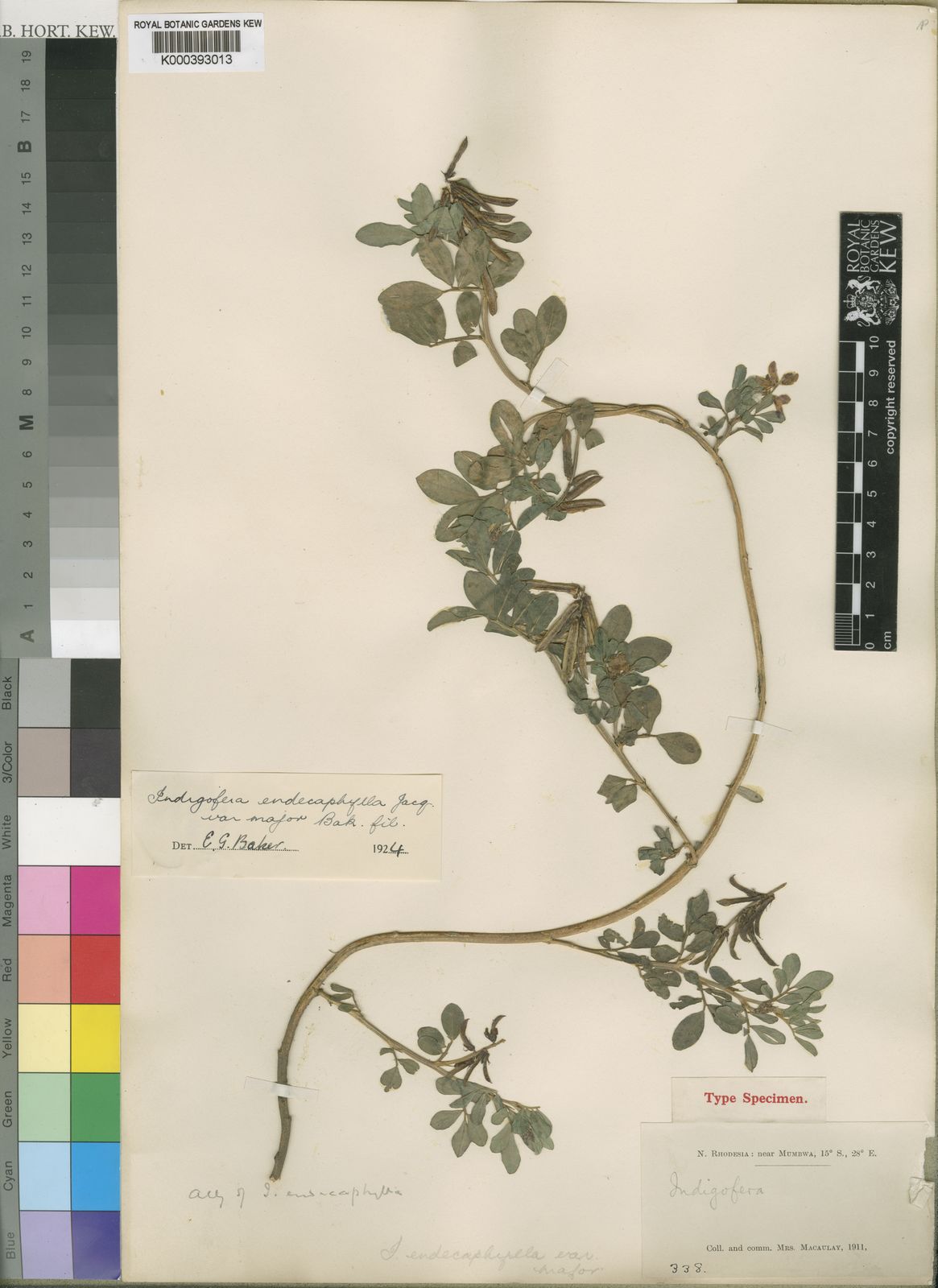Family: Fabaceae
Author: Forssk.
Bibliography: Fl. aegypt.-arab. 138. 1775
Year: 1775
Status: accepted
Rank: species
Genus: Indigofera
Vegetable: False
Observations: Africa, Arabian Pen.
Description
Creeping indigo, scientifically known as Indigofera spicata, is a fascinating member of the Fabaceae family. This plant has garnered attention due to its unique characteristics and versatility. Documented in the historical botanical text “Fl. aegypt.-arab. 138.” by Forsskål in 1775, Creeping indigo has established a notable presence within the field of botany.
Indigenous to several regions, Creeping indigo thrives predominantly in Africa and the Arabian Peninsula. This geographic distribution highlights its adaptability to diverse climates, ranging from arid environments to more temperate conditions. This adaptability makes Creeping indigo a plant of interest for both ecological studies and potential agricultural applications.
The creeping nature of this indigo species allows it to spread across the ground, creating a dense mat of foliage. This growth habit can be beneficial for soil conservation, as it helps prevent erosion and maintains soil structure. Additionally, as a member of the Fabaceae family, Creeping indigo contributes to nitrogen fixation in the soil, thereby enriching it and enhancing its fertility.
Creeping indigo has a distinctive appearance, characterized by its slender stems and small, pinnate leaves. During its blooming season, it produces clusters of small, pea-like flowers, which can vary in color from pink to purple, adding aesthetic value to the landscapes it inhabits.
The plant has been utilized in various traditional practices across its native regions. In some cultures, parts of Creeping indigo are employed in herbal medicine, although care must be taken due to the presence of certain toxic compounds that can be harmful to livestock if ingested in large quantities.
Overall, Indigofera spicata stands out as a noteworthy species within the Fabaceae family, notable for its ecological benefits, traditional uses, and distinctive growth habits. Further research into this plant could uncover additional benefits and applications, reinforcing its significance in both natural and agricultural systems.
Common Names
Eng: creeping indigo
Por: amendoim-bravo
Deu: kriechender indigostrauch
En: Creeping indigo
De: Kriechender Indigostrauch
Pt: Amendoim-bravo
Synonyms
- Anil spicata ((Forssk.) Kuntze)
Distribution
- Angola (native)
- Benin (native)
- Burkina (native)
- Burundi (native)
- Cameroon (native)
- Cape Provinces (native)
- Central African Repu (native)
- Chad (native)
- Congo (native)
- Djibouti (native)
- Equatorial Guinea (native)
- Eritrea (native)
- Ethiopia (native)
- Gabon (native)
- Ghana (native)
- Guinea (native)
- Guinea-Bissau (native)
- Gulf of Guinea Is. (native)
- Ivory Coast (native)
- Kenya (native)
- KwaZulu-Natal (native)
- Liberia (native)
- Madagascar (native)
- Malawi (native)
- Mali (native)
- Mauritius (native)
- Mozambique (native)
- Niger (native)
- Nigeria (native)
- Northern Provinces (native)
- Rwanda (native)
- Réunion (native)
- Senegal (native)
- Sudan (native)
- Swaziland (native)
- Tanzania (native)
- Togo (native)
- Uganda (native)
- Yemen (native)
- Zambia (native)
- Zaïre (native)
- Zimbabwe (native)
- Alabama (introduced)
- Bolivia (introduced)
- Brazil Northeast (introduced)
- Brazil Southeast (introduced)
- Brazil West-Central (introduced)
- Colombia (introduced)
- Cook Is. (introduced)
- Costa Rica (introduced)
- Florida (introduced)
- Jamaica (introduced)
- Leeward Is. (introduced)
- Nauru (introduced)
- New Caledonia (introduced)
- New South Wales (introduced)
- Nicaragua (introduced)
- Puerto Rico (introduced)
- Queensland (introduced)
- Society Is. (introduced)
- Windward Is. (introduced)
Additional Images
Habit
Taken Jan 6, 2020 by Dieter Albrecht (cc-by-sa)
Taken Jun 26, 2022 by Chris Griggs (cc-by-sa)
Taken Jan 12, 2020 by Dieter Albrecht (cc-by-sa)
Taken May 21, 2018 by Tela Botanica − Rudi HALBEHER (cc-by-sa)
Taken Jul 1, 2022 by Trap Hers (cc-by-sa)
Leaf
Taken Jan 25, 2021 by Samuel Matthews (cc-by-sa)
Taken Dec 30, 2019 by wilson de barros (cc-by-sa)
Taken Jul 1, 2022 by Trap Hers (cc-by-sa)
Taken Oct 30, 2021 by pedrogc — (cc-by-sa)
Taken May 21, 2021 by Tato Gangnant (cc-by-sa)
Flower
Taken Oct 30, 2021 by pedrogc — (cc-by-sa)
Taken Jan 3, 2020 by Chee Keong Chan (cc-by-sa)
Taken Oct 13, 2021 by Christy Lawson (cc-by-sa)
Taken Jan 24, 2021 by Jorge Montero (cc-by-sa)
Taken Mar 15, 2020 by palominovelez francystella (cc-by-sa)
Fruit
Taken Jan 6, 2020 by Dieter Albrecht (cc-by-sa)
Taken Feb 1, 2022 by Feya Sterling (cc-by-sa)
Taken Aug 6, 2020 by Martin Austin (cc-by-sa)
Other
Taken Jan 4, 2020 by Chee Keong Chan (cc-by-sa)

© copyright of the Board of Trustees of the Royal Botanic Gardens, Kew.
Sources
- WFO (No URL)
- IPNI (No URL)
- GBIF (https://www.gbif.org/species/2971635)
- POWO (http://powo.science.kew.org/taxon/urn:lsid:ipni.org:names:500027-1)
- PlantNet (https://identify.plantnet.org/species/the-plant-list/Indigofera spicata Forssk.)



















